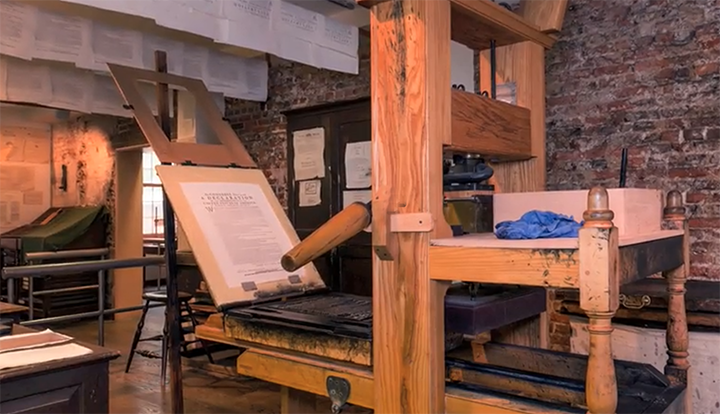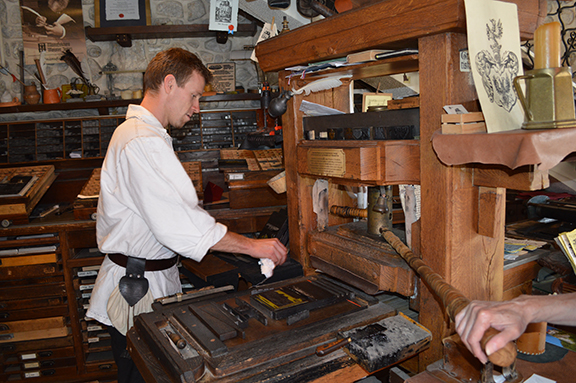The most popular exhibit at Bled Castle, a famous tourist destination in the European nation of Slovenia, is the print shop.
It’s interesting that amidst the weapons and armor and paintings and tapestries and dungeons and kitchens, and all those things from a far distant age, it is the press that strikes the deepest chord of familiarity and curiosity among so many people.
People from all over the world press in to hear about the communication revolution that changed Europe almost 600 years ago . They want to hear about the way type was set, and what the ink was made of, and how Gutenberg came up with the idea, and didn’t China have the notion first?
The highlight of the experience is setting a piece of type for yourself and pulling the press bar. There’s nothing like it.
It’s a magical feeling, and it’s one that we don’t have to travel to Slovenia to reproduce.
There are at least two working printing shops at museums in the US. One is at the National Park Service Benjamin Franklin Museum in Philadelphia, PA. Notice here that the working print shop has lots of inked pages hanging like laundry from strings across the shop.In the background towards the rights you can see the type cases partly covered with a green cloth. The press itself has its frisket and tympan open and a printed page ready to be taken off. Once a fresh unprinted page is inserted, the frisket (the open square at the top) will be folded over the tympan (which holds the paper) and then both will be folded down onto the press bed, which at this point should be well inked. 
Another working museum is at Colonial Williamsburg, Virginia, where professional re-enactors tell what it was like to work in a printing chapel.
Both the Franklin and Williamsburg press exhibits are cordoned off from the public, unlike the Bled Castle exhibit. So the magic of a shared experience doesn’t quite come across the same way.
For those wishing to pursue the idea, there are some relatively detailed plans and procedures for a replica of Isaiah Thomas’ printing press that was built by a team of craftsmen in Provo, Utah beginning in March, 2013. It was donated to the Society for the Preservation of America’s Founding values, a Provo based educational non-profit. The biggest problem was the spindle or hose that translates the lever pull into two inches of strong downward pressure.
‘An intrepid group at the Rochester Institute of Technology built a Franklin-style Common Press after an extensive study of museum pieces in their region. The printing press is alive and well at RIT.
Another Common Press was built in 2006 at the graphic arts department at Middle Tennessee State University.
Professor Kovarik, the author of Revolutions in Communication, is looking for other, similar projects, plans and recommendations, along with sources of old type and type cases. Email bill dot kovarik who is at gmail with the dot com. Thanks.

